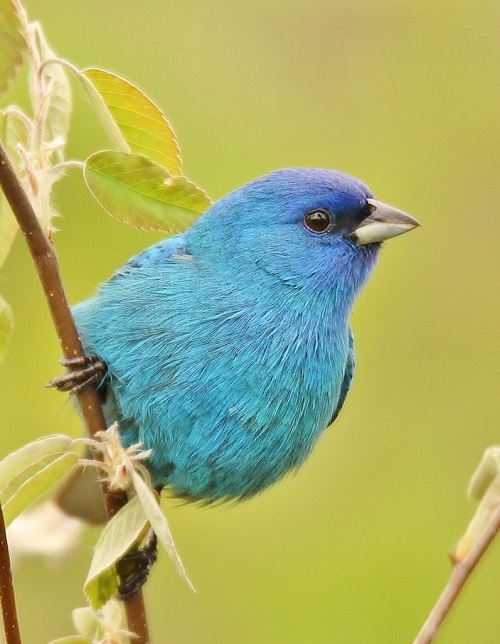 https://ebird.org/wi/hotspot/L301781
https://ebird.org/wi/hotspot/L301781
Habitat: Mixed Coniferous Forest, Northern Hardwood Forest, Southern Hardwood Forest, Pine Plantation, Conifer Bog, Successional Oldfields, Willow, Alder or Dogwood Swamp, Open Water.
Best Birds: Near the junction with County SS bird the brushy road edge where Broad-winged Hawk, Black-billed Cuckoo, Blue-winged, Black-and-white, and Mourning Warbler, and Eastern Towhee can be found. In winter Pine Siskin, Purple Finch, and Common Redpoll have frequented this location.
Continuing north, the habitat changes to maple-oak forest and smaller plots of Red Pine and Red Pine plantation. Check the Red Pines for Red-breasted Nuthatch, Pine Warbler, and a variety of finches in winter . The maple-oak forest continues to a gas line corridor and is good for Red-shouldered and Broad-winged Hawk, Pileated Woodpecker, Acadian and Least Flycatcher, Wood Thrush, Hooded Warbler, Cerulean Warbler, and Scarlet Tanager. Where the road opens to successional oldfield look for Blue-winged, Chestnut-sided, Mourning, and Pine Warbler, and a good variety of sparrows - especially migrants.
As you travel farther north the habitat again changes back to mature forest. On your left look for an obvious trail, framed by metal posts (43.62614, 88.17028). Park here and walk the trail west to see or hear either cuckoo, Broad-winged Hawk, Acadian Flycatcher, Great Crested Flycatcher, Yellow-throated Vireo, Wood Thrush, Hooded Warbler, Black-throated Green Warbler, and Scarlet Tanager.
Back on Haushalter, continue north a short way until you see a White Spruce plantation on your right. Broad-winged Hawk is fairly reliable here as are Mourning and Black-throated Green Warbler. Golden-crowned Kinglet, Red-breasted Nuthatch, Pine Siskin, and Purple Finch are also possible any time of year.
At the end of the road around the cul-de-sac one can often spot both cuckoos, as well as Broad-winged Hawk, Red-shouldered Hawk, Pileated Woodpecker, Alder Flycatcher, Blue-winged Warbler, Black-and-white, and Magnolia Warbler.
Hiking the shorter east trail your first stop will be at a stream. Here Alder Flycatcher, Winter Wren (rare), and Blue-winged, Black-and-white, Nashville, and Mourning Warbler are possible in the appropriate season. The trail then passes through some upland habitat where Blue-winged and Chestnut-sided Warbler , Eastern Towhee, and Field Sparrow are possible.
As you proceed, the habitat changes to lowland conifer. Here Red-shouldered Hawk, Red-breasted Nuthatch, Ruby-throated Hummingbird, Brown Creeper, Winter Wren (rare), Veery, and Northern Waterthrush can be found.
During the winter season Pine Siskin, Purple Finch, Common Redpoll, Red Crossbills, and Evening Grosbeaks (rare) have been encountered feeding in the conifers and tamarack. Once you encounter a small spring pond, retrace the trail and return to the parking lot.
From the parking lot, the trail north will take a little more time to bird. The habitats are diverse but more spread apart. You may encounter Alder Flycatcher, Blue-winged Warbler, Nashville, Black-and-white , and Mourning Warbler. The Tamaracks on your right will usually have Veery and occasionally Brown Creeper.
Another Horse-Snowmobile trail will connect from the west. Take this trail for a short distance, as it can provide you with an excellent opportunity to study Alder Flycatcher. At the bridge check for Swamp Sparrow, and occasionally Northern Waterthrush. Return to the main trail and continue north to a series of conifer plantations. On your left is a dense stand of mixed cedar and spruce, where Golden-crowned Kinglet have nested. To the east, is a White Spruce plantation that can have Golden-crowned Kinglet, Pine Siskin, and Purple Finch any time of year. Broad-winged Hawk often roost along this section of trail as well.
Once past the cedar plantation the trail bends east where to the west is an area of mixed deciduous forest. Here Red-shouldered Hawk and Black-throated Green Warbler occur. Continuing on, Red and White Pine dominate, and Blue-headed Vireo (rare), Black-throated Green Warbler, Pine Warbler, and infrequently Magnolia Warbler (rare) have been seen during the summer.
Directions: 53 miles NNW of Milwaukee/20 miles southeast of Fond du Lac. From Highway 45 take County SS to Haushalter Lane. Haushalter is a dead-end road that goes north for 1.2 miles from its junction with County Highway SS (43.61588, -88.17320). Drive to the parking area at the north end (43.63149, -88.17002) stopping to bird along the way. From the parking lot, there are two trails. Though it is possible to find a connecting trail and walk a 2 mile loop it is for birding best to hike out and back on each trail separately.
From the parking lot, the trail north (43.63214, -88.17014)
Site Address and Additional Information:
Haushalter Road is one of the birding gems of the entire Kettle Moraine State Forest NU, especially for the diversity in breeding species. If your birding time is limited, this area would provide the greatest cross-section of habitats and diversity of birds in the smallest geographic region. It can be good any time of year, but the road is not maintained during the winter months and can be a challenge - travel at your own risk.
Haushalter Lane, Campbellsport WI
Kettle Moraine North Wisconsin State Park System | Wisconsin DNR
Kettle Moraine SF--Haushalter Ln
Jeff Baughman

